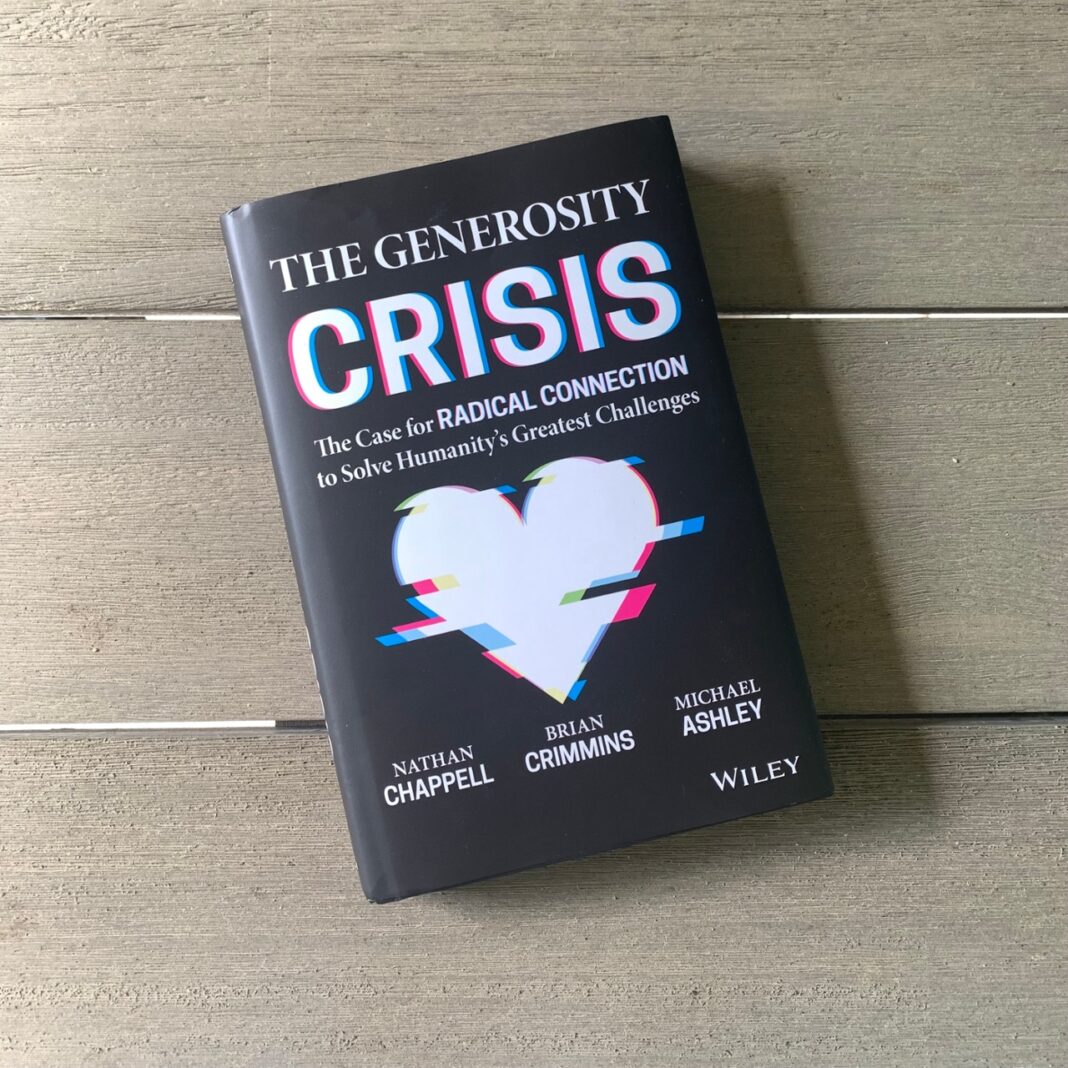Book review: Brian Crimmins, Brian, Nathan Chappell and Michael Ashley, The Generosity Crisis: The Case for Radical Connection to Solve Humanity’s Greatest Challenges. (Hoboken, NJ: Wiley, 2022).
Many fundraising teams are still operating as if it were 1990 rather than embracing today’s technological advances, like artificial intelligence (AI). Why? It’s human nature to stick with the old ways of doing things. It’s comfortable. But, as my yoga instructor likes to say, staying comfortable isn’t always the best choice. Innovation requires us to step out of our comfort zone, to experiment, to find better ways of accomplishing our tasks and achieving our goals.
This is the case made by The Generosity Crisis: The Case for Radical Connection to Solve Humanity’s Greatest Challenges. Authors Brian Crimmins, Brian, Nathan Chappell and Michael Ashley believe that we need to radically rethink old fundraising approaches by building stronger personal connections and by making better use of AI to personalize and tailor communications.
Communication Blunders
For example, say that a married couple, Tony and Carmen, each receive duplicate fundraising materials from their alma mater, with no personalization at all. “Their alma mater,” say the authors, “not only doesn’t know these two met and fell in love on campus—it is clueless about the deep connection Tony and Carmen have for their college—or could have had.”
Over a lunch conversation, Nathan Chappell, one of the book’s coauthors, shared with me an example of a university requesting a donation from a recent alumnus—whose graduation had been held up due to an unpaid parking ticket. How receptive, Chappell asked, do you think he would be to that ask?
Better use of technology would make those cringe-worthy examples less likely. Nonprofits can no longer depend on legacy systems that lead to such misfires, the authors argue, because the percentage of Americans giving money is decreasing. The book cites statistics from the Indiana University Lilly Family School of Philanthropy: the number of Americans giving to charity has declined from 66% (2000), to 55% (2014), to 53% in 2016 and 49.6% at the time they wrote their book.
We can do better.
The Solution
A healthy portion of the book shares stories illustrating why creating an emotional connection with donors is so urgent right now. Fundraising professionals understand this well and will readily agree. However, The Generosity Crisis takes this idea a step further by suggesting that nonprofits can find and make that emotional connection more easily by harnessing the power of big data and AI. These tools can help to cut through the noise and provide more tailored, meaningful connections with current and prospective donors.
For example, by utilizing AI tools, a hospital’s fundraising team increased annual donations by 6%. Drawing on thousands of data points, the fundraising team used AI to accurately pinpoint people with an affinity for the hospital’s mission. This enabled the team to reverse-engineer the reasons people give, to find more people with like affinities, and to build tailored messaging to reach that group. A key lesson, say the authors, is that we can get distracted by the wrong data points, like individual net worth, when factors such as past volunteerism and online engagement are far better predictors.
Evolving Expectations
The Generosity Crisis makes the case that consumers have come to expect personalized service as standard and will likely expect the same level of service from nonprofits. Compare Tony and Carmen’s impersonal, transactional experiences with their alma mater to the way Amazon or Netflix make recommendations based on a customer’s previous shopping habits. It’s time for nonprofits to catch up on this kind of highly focused effort.
As I share in my recent book, Innovation for Social Change: How Wildly Successful Nonprofits Inspire and Deliver Results, innovation is about challenging the status quo, boldly experimenting, and finding new and better ways of doing things with our limited resources. The stakes are high, and our stakeholders are counting on us.

